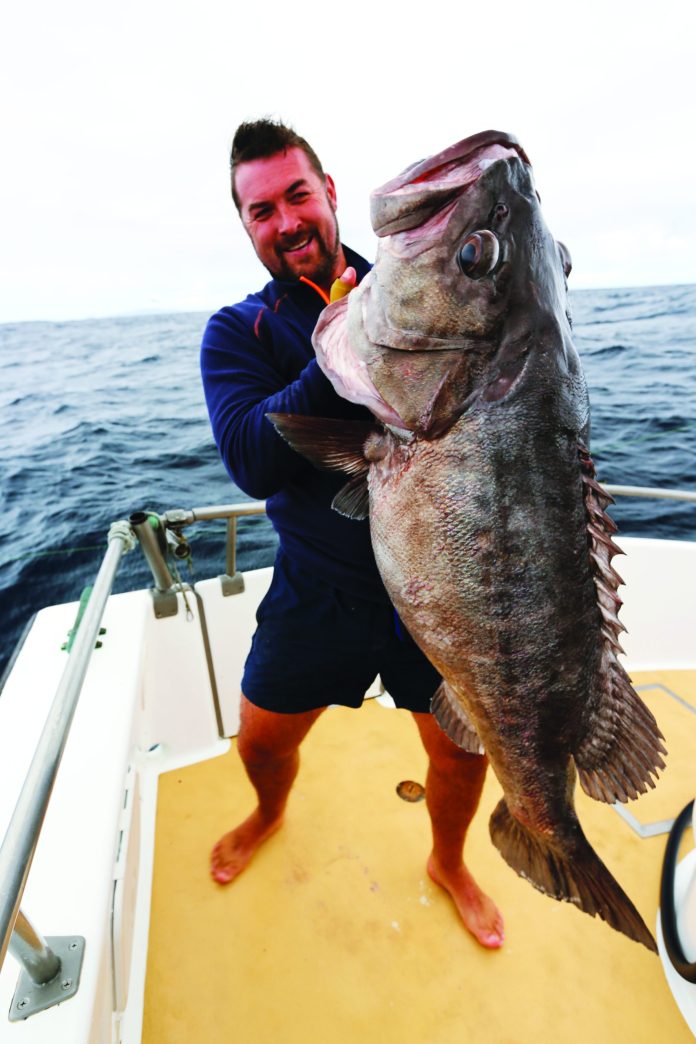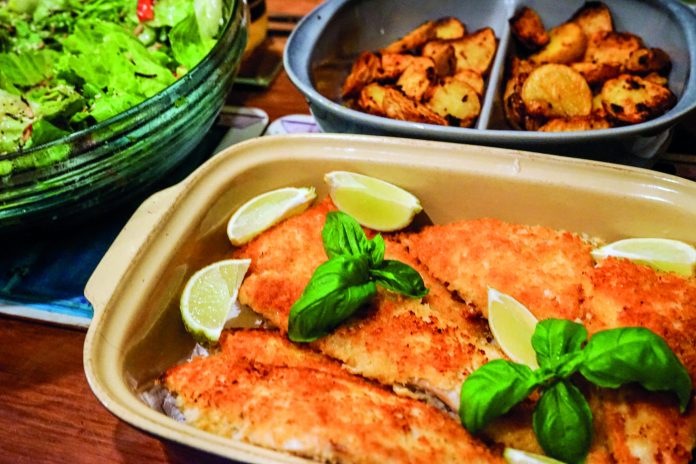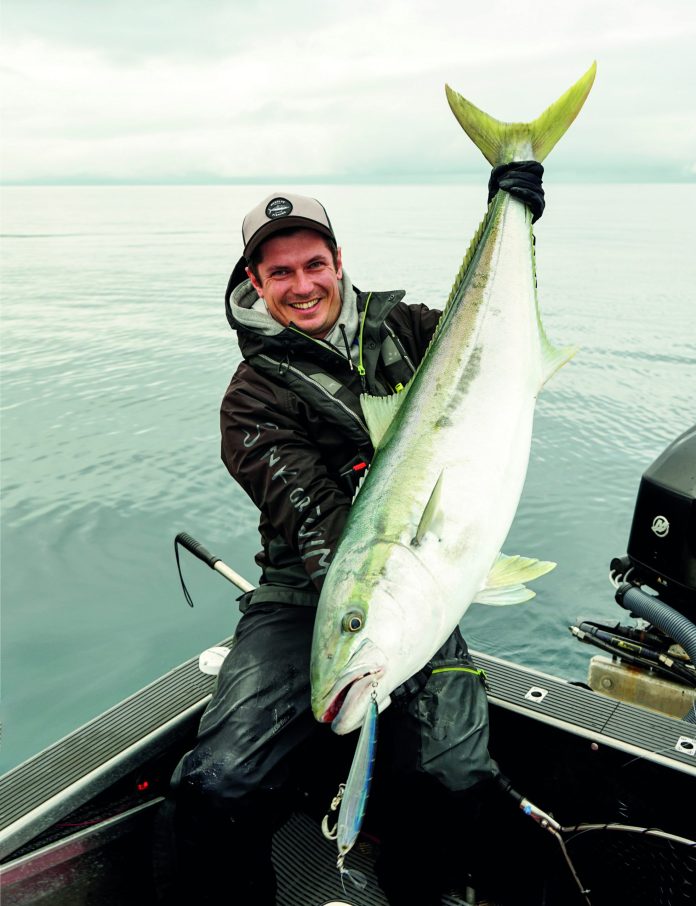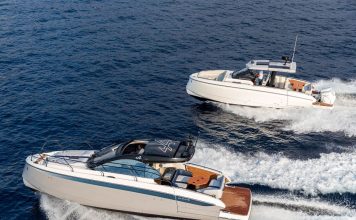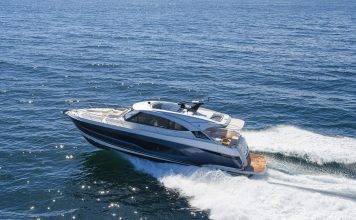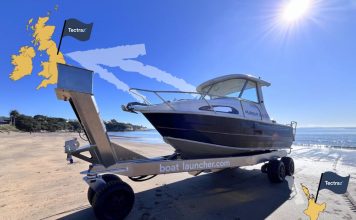Last issue we looked at using landing nets, which requires less skill – even complete novices can be coached through the netting process by an experienced angler. When netting, the important thing is not to panic and this applies to gaffing fish as well – the focus of this month’s feature.
So why use a gaff rather than a net? A large, strong landing net with a robust rubber net bag is hard to beat – large nets can even accommodate quite big kingfish – and because they cause minimal damage to the fish, anglers can decide whether to keep their catch or release it afterwards.

But nets have disadvantages too. For a start, they are generally relatively bulky, so finding a place to stow them, especially somewhere easy to reach when they’re needed, can be difficult, particularly on smaller boats. Yes, there are designs incorporating telescopic or sliding handles, as well as nets with a folding net hoop, but such designs often sacrifice overall strength or long-term reliability – and they can be fiddly to deploy.
Water drag means nets are hard to push through the water quickly, so they’re only really effective when fish are swimming very close to the surface.

The materials they are made can cause problems too. Nets made from aluminium tend to be nice and light, but they can bend when trying to lift a heavy fish. If stainless steel is used, the net is much heavier and therefore even more unwieldy, especially when you are stretching out with a long-handled model.
Gaff time!
A gaff tends to be the landing aid of choice when a fish is BIG – too big for your net – and destined for the table.

Fortunately, due to its slim nature, a gaff can be stored onboard somewhere handy, ready for use at a moment’s notice.
What makes a good gaff?
A lightweight, corrosion-resistant gaff handle/pole of modest diameter: The best gaffs have light, slim poles so they’re easy to wield. They offer minimal drag when swept through the water as you’re trying to secure a fast moving, unpredictable quarry. The longer the pole (it should be long enough to reach the water, plus at least another metre outwards or down), the sooner the struggling fish comes within gaffing range. This can allow anglers to cut a fight short, which is a big plus when fighting large fish, because sometimes there’s no second chance. However, the longer the pole, the heavier and less accurate the gaff will be. For lightness, most gaff handles are made from aluminium or aluminium alloy (I find stainless too heavy), which also keeps the overall price down, but handles on cheap gaffs may easily bend. Get into the habit of always lifting fish on board with the gaff held as vertically as possible. If you can afford one, a high-quality gaff handle made from hollow fibreglass is hard to beat. It’s light, strong and flexible enough to avoid bending damage or breaking when things go crazy boatside!

A strong and well-shaped gaff hook: Shape is a hotly debated topic, but I like my gaff hook’s point to be parallel to the shank. That is because I always try to gaff deliberately and decisively, sweeping down onto the fish and then pulling the gaff hook up and towards me. Using this gaffing style, outwardly-angled gaff points tend to bounce off the fish. However, I realise that the wider-gaped, angled design has been developed to ‘grab’ more of the fish, so it’s less likely to rip out in a hard struggle. With this type of gaff hook the gaffing movement is more of an arcing, axe-chopping motion.
A strongly secured gaff hook: Rivets are not the best connection since they tend to be made from aluminium which is relatively weak and prone to corrosion. Rivets are known to fail when gaffing big fish. So, if you’re serious about catching strong pelagics such as big kingfish and tuna, the gaff hook’s shank should be shaped so it can be wedge-locked into a tapering handle and secured with high-strength two-pot adhesive. Such gaffs tend to be expensive.

Comfy, secure grips: As bare aluminium tends to be slick and hard to hang onto when wet, a couple of strategically-placed Hypalon/EVA grips along the pole’s length can prove invaluable. Be aware that cheaper grip materials can break down over time, leaving black residue on your hands and clothes.
Security loop: Although some debate surrounds this feature, I like a sturdy cord loop fitted to the end of the gaff pole. One hand can be passed through it before grasping the rear grip, providing a valuable backstop should a big, powerful kingfish, yellowfin or marlin wrench the gaff out of your hands. However, gaffed sharks tend to spin around uncontrollably, which can lead to the loop winding tightly around an angler’s hand, causing injury. That’s why loops are controversial.
The technique
Gaffing is pretty simple, but lots of amazing fish get lost at the gaff. The main things to remember when gaffing are firstly, don’t panic, and secondly, only take the shot when you feel it’s likely to succeed.
In particular, try to ignore the desperate screams of “F.. F…’. S….! Just gaff the bloody thing!” Angler frustration, excitement and exhaustion often means they’re asking for the impossible. Only the person with the gaff will truly be in a position to judge when the moment is right.
Until then, keep moving around the angler as necessary, staying close ready for quick action, but out of their way. Then, when a gaffing opportunity looks imminent, position yourself so the gaff hook and pole won’t come into contact with the leader during the gaffing procedure. Now wait patiently for the fish to swim into range – both from the point of view of distance and depth (the closer to the surface the better). For the best chance at success, you’ll want to place the gaff into the fish’s upper shoulder, where it’s meaty and gaff damage won’t ruin the fillets. The head is okay, too, but that’s harder to achieve.

When the time comes, be decisive: sweep the gaff down to meet the fish before pulling back; if your movements are quick, you’ll basically be using the pole against the fish’s back to position and slide the gaff hook home. If it’s a big, strong fish, you may need to hang on hard as it thrashes around after the gaff hits home, hopefully with the safety lanyard around your wrist, and perhaps also trying to lift as much of the fish out of the water as possible so it has less purchase on the water.
When the craziness subsides, check that the fish is still securely pinned, then lift it up and into the boat, holding the gaff pole as vertically as possible to avoid bending or breaking it.
Want to release your gaffed fish?
If you’re careful, some tougher fish species, kingfish especially, can be lip-gaffed, brought on board for quick measurements and pics, and then released without too much impact on their survival. However, keep in mind that for a fish, being out of the water is similar to one of us having our head submerged, so don’t muck around!
















